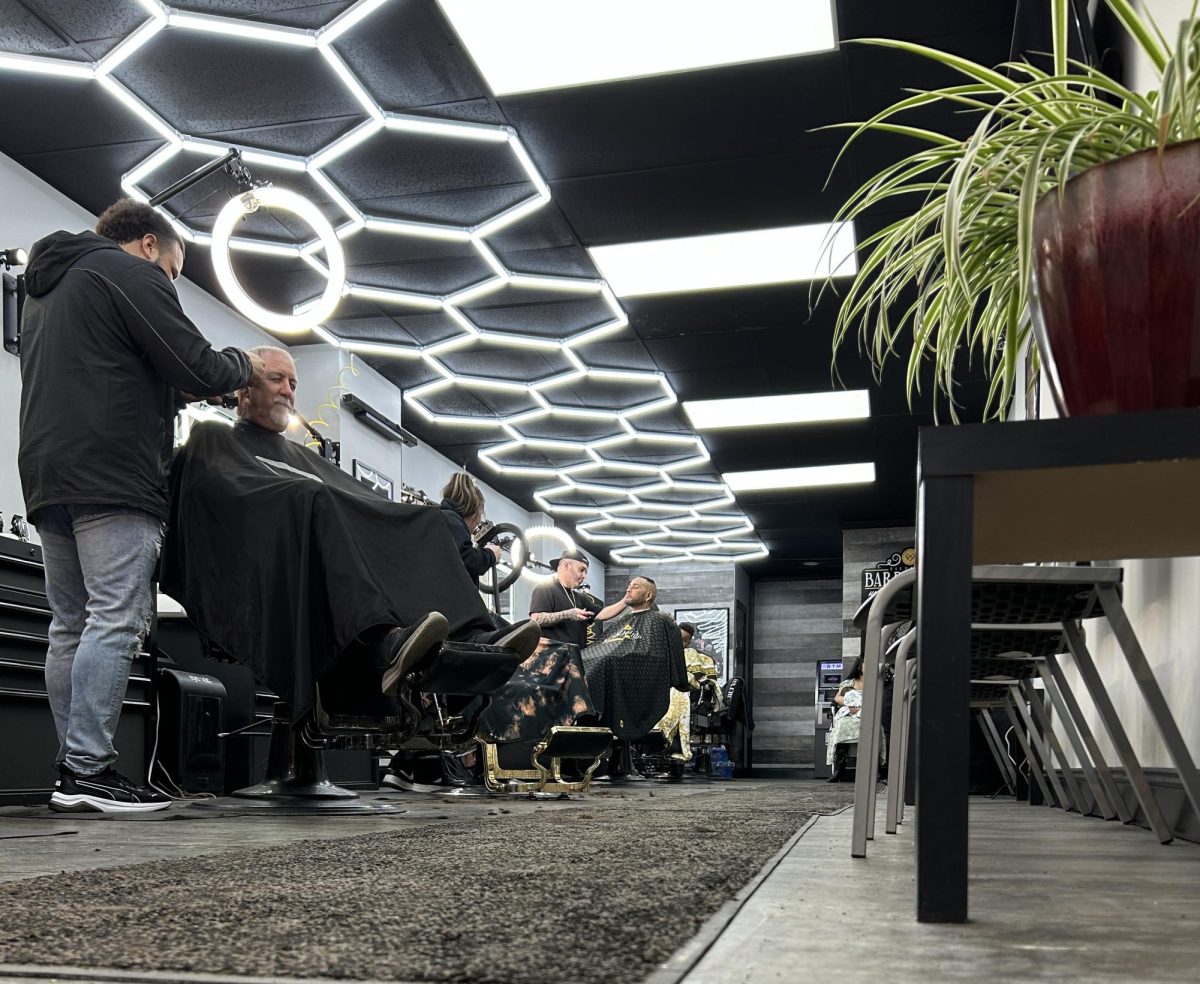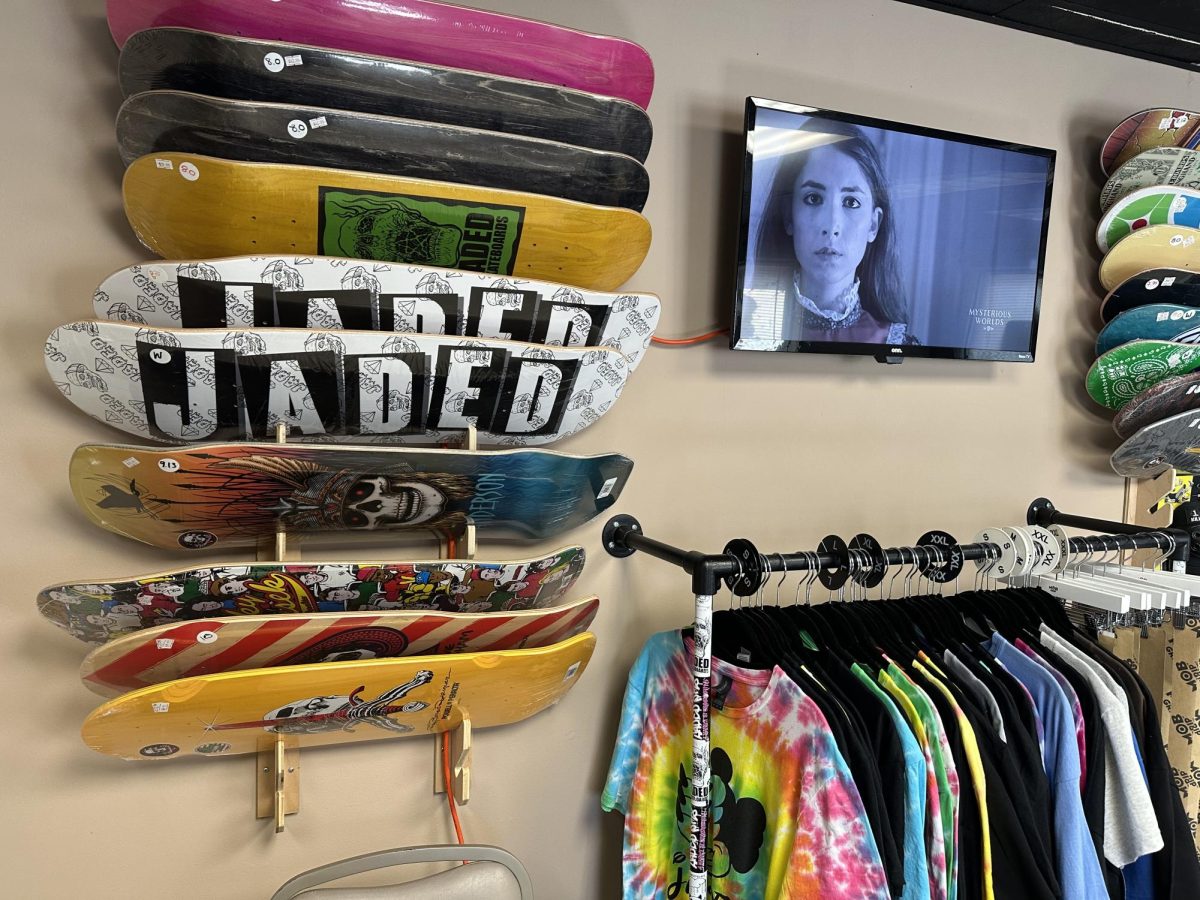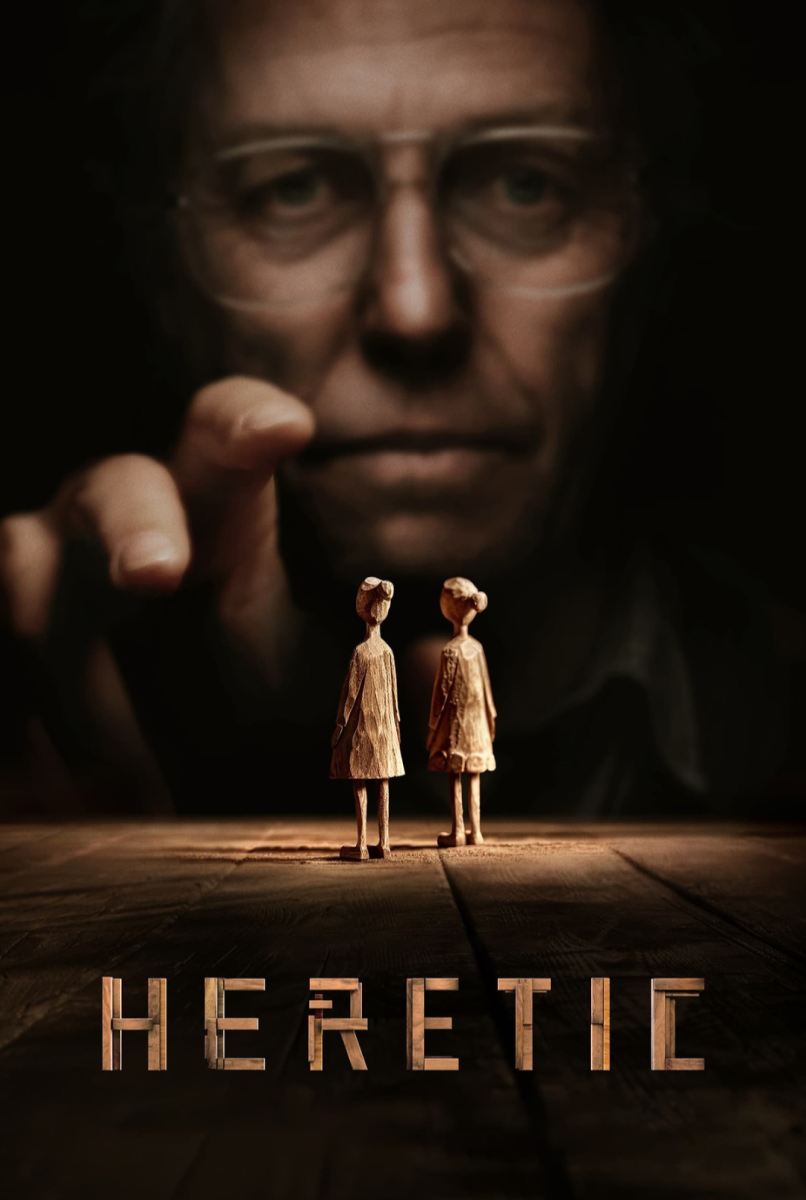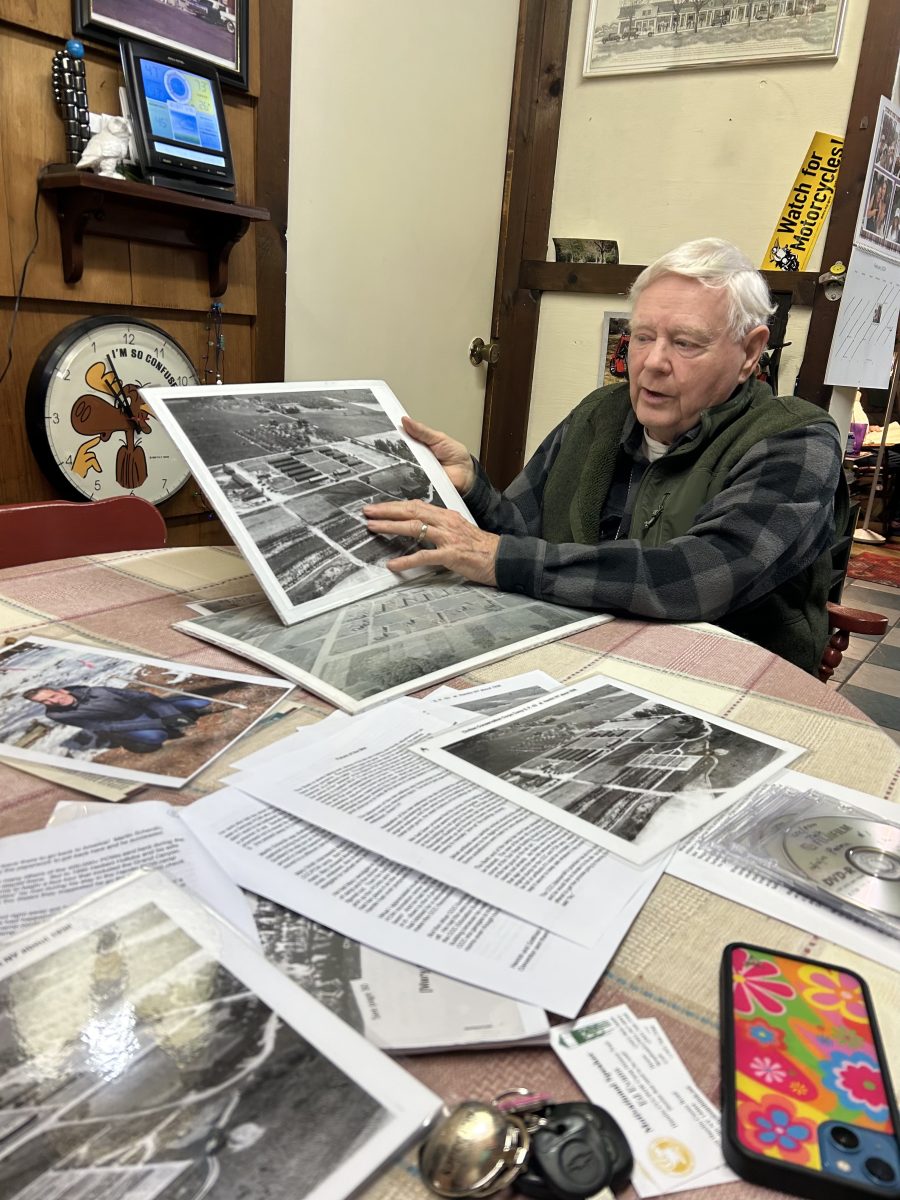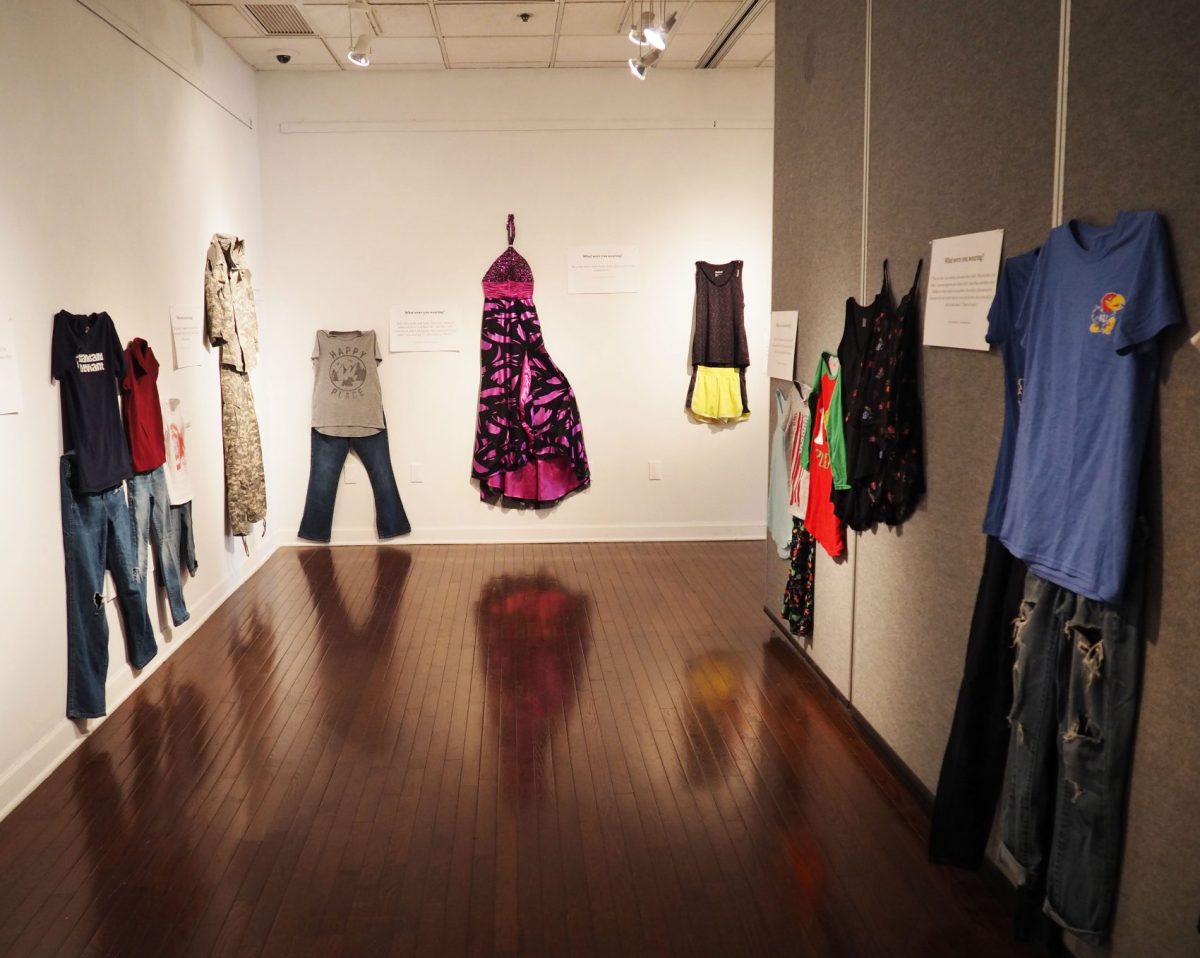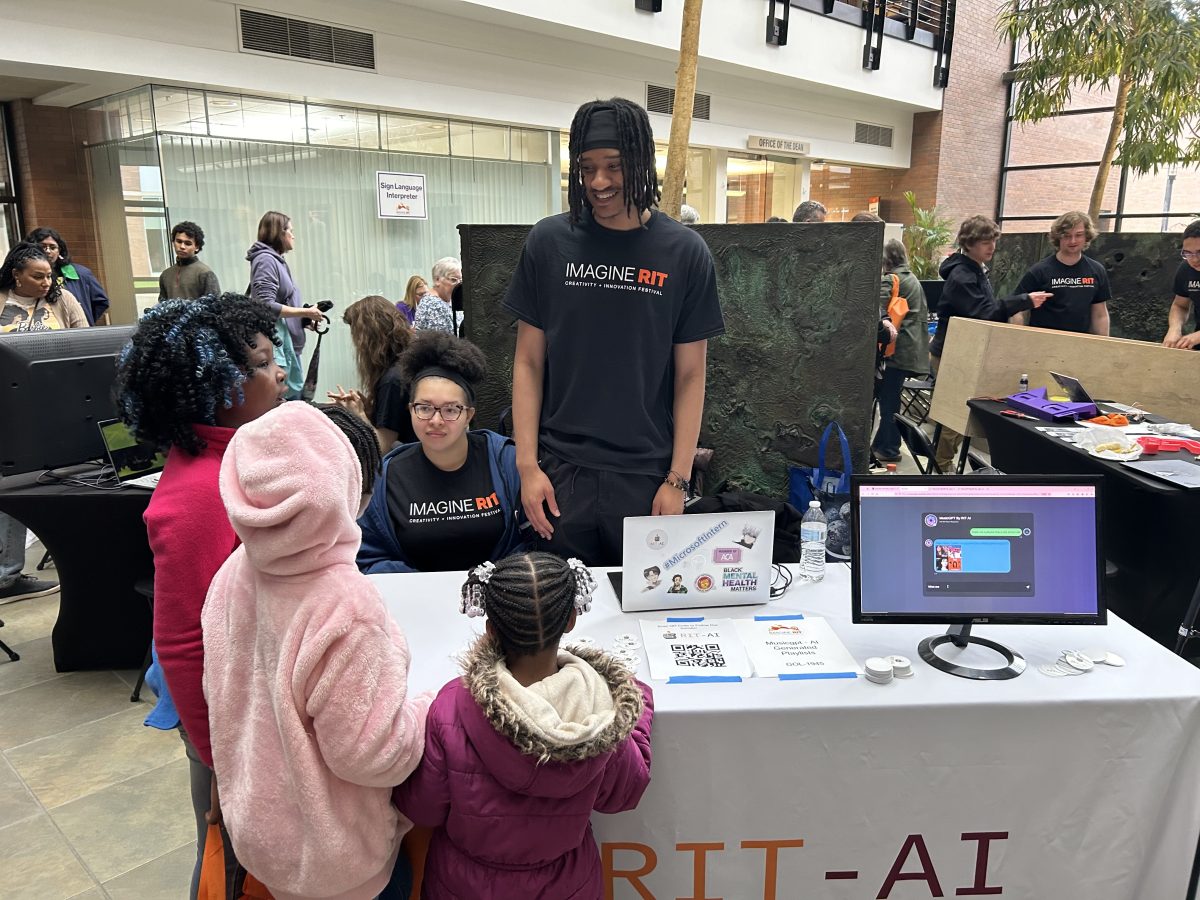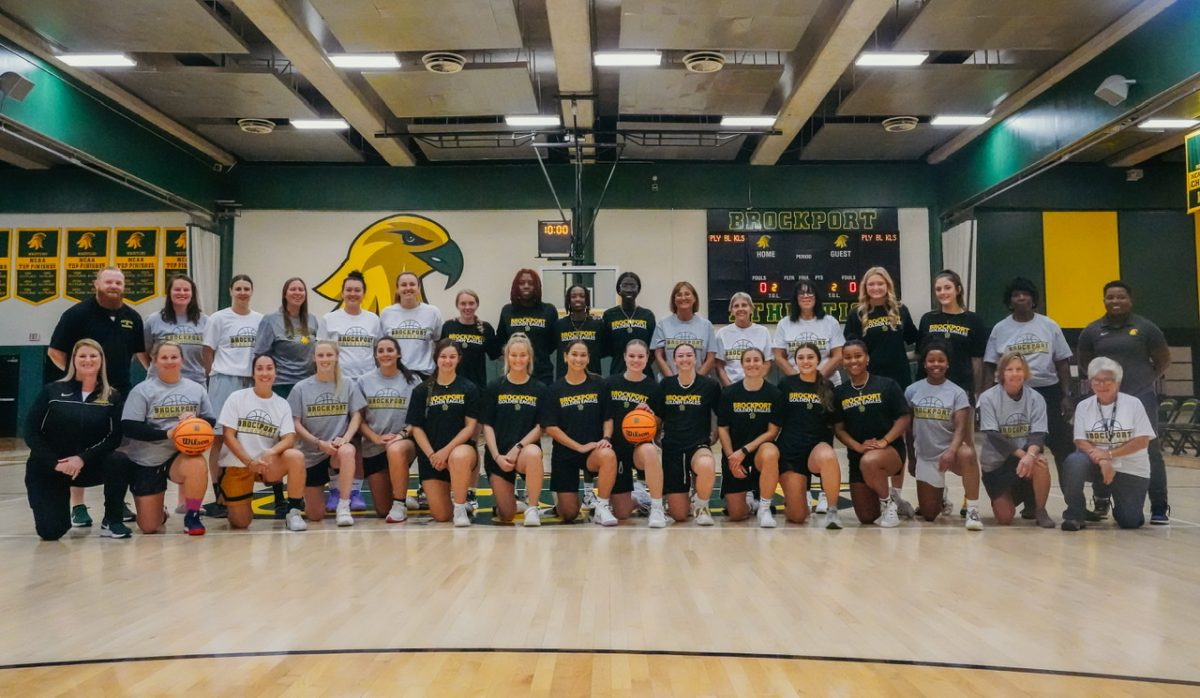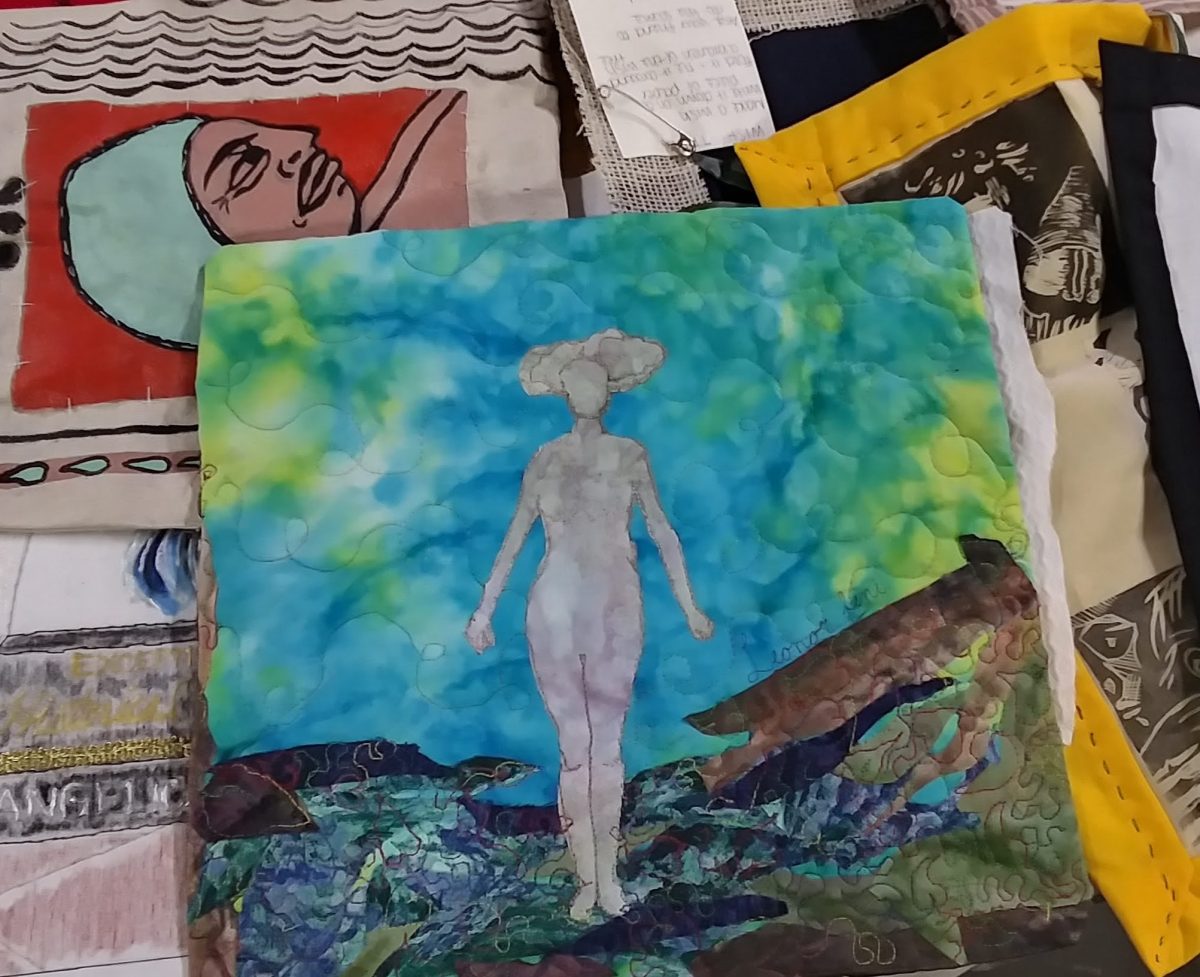By MaryJo Nuzzo
She shouldn’t have worn that. With a skirt that short, she was asking for it. Things like this are often said about victims of sexual assault when they come forward about their experience. Victims often deal with added shame from the stigma-filled reactions of others that know about the assault. One of the most common stigmas around sexual assault is assuming that what the victim was wearing was the cause of the assault.
What Were You Wearing is an exhibit executed by Health Promotion and Prevention Education at SUNY Brockport and RESTORE. It was an alluring exhibit that explored how to challenge the stigma of “What were you wearing?” The What Were You Wearing Exhibit took place in the SUNY Brockport Seymour College Union from April 10 to 14.
The exhibit is designed to challenge the rape myth that what someone is wearing causes their assault. It also challenges the idea that there is only one form of survivor by highlighting the diversity of survivor experiences and voices.
Associate Director of Prevention and Outreach Services at SUNY Brockport Mat Hall has organized the What Were You Wearing exhibit at multiple universities.

“There is a variety of mental models that we as a society have created that dictate who is going to be a victim, who’s more likely to be a victim,” Hall said. “One of the things that we hear most often is that people’s clothing invites unwanted sexual attractions, sexual contact, sexual overtures. So, we often use that sort of rape myth in very gendered ways. We often say to people, you know, cover-up, insinuating that is their responsibility to attend to the sexual behaviors of other people,” Hall said.
According to Resilience, there are multiple rape myths and stigmas. For example, people who are raped “ask for it” by the way they dress or act. Myth. Rape is a crime of opportunity. Studies show that rapists choose their victims based on their vulnerability, not how sexy or flirtatious they appear to be. Fact.
“We know that oftentimes people are told well you shouldn’t wear that or it wouldn’t have happened if you hadn’t worn that. Or in this case, What Were You Wearing,” Hall said. “There are survivors of all ages, genders, and circumstances and by looking at the gallery you can see just how diverse those experiences are. No two stories are alike and I think the exhibit does a really good job of countering that narrative because oftentimes you see the sort of commonplace clothing like pajamas and sweatpants. One of the hard ones that we had was a small child’s dress,” Hall said.
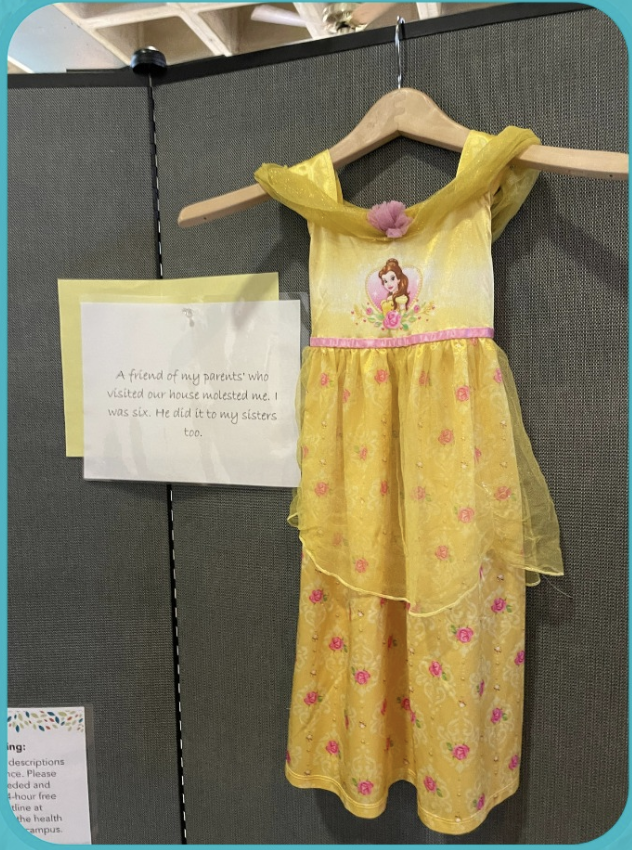
According to RAINN of all victims of sexual assault under the age of 18, two out of three are ages 12-17 and an alarming 93% of child victims know the perpetrator.
“You can’t pin the sexual behavior of predators on a small child and I think that’s easy for everyone to understand but we also can’t pin that behavior onto any other survivor either. Predatory behaviors are the actions and responsibilities of people who commit acts of sexual violence,” Hall said.
RESTORE is a rape crisis program of Planned Parenthood in Central and Western New York. RESTORE provides crisis intervention and support to survivors of sexual assault and their loved ones. They lead the community’s response to sexual violence through community advocacy and education. Sarah Link is an advocate that was present at the What Were You Wearing Exhibit. The support and advocacy provided to students and the exhibit differ from the usual advocacy that the college outreach specialists from RESTORE typically provides.
“We had some standard swag stuff there, like buttons, stickers, and pamphlets. At the What Were You Wearing exhibit we had a content warning which we don’t normally do for our tabling events but given the nature of the display we wanted to make sure that people knew what they were walking into. The main difference was the print out with the content warning and it included an article explaining the idea behind What Were You Wearing and students were able to take them if they wanted to,” Link said.

A SUNY Brockport student who for the purpose of this story we’re calling Sue Smith, was sexually assaulted in June 2021. This was the summer before her first year as a college student. In October 2021, Take Back the Night (TBTN) returned to SUNY Brockport’s campus for the first time since the pandemic. She attended the event and quickly had to dismiss herself as it was triggering, so soon after her assault.
“I guess I just never really acknowledged how serious it was until I was there (at TBTN). It was only like three months after my assault, it was very soon. It was the first time I considered myself a victim,” Smith said.
Over a year later this student attended the What Were You Wearing exhibit at SUNY Brockport. The experience was very different from her experience at TBTN.
“I went to the exhibit with a friend, the same one who was with me at TBTN. By now, I have hit a point of, acceptance, I guess. It’s been almost two years since my assault. The exhibit was much easier to walk through. Seeing that there were other people like me, I could take in all the information on my own account, like on my own time. I wasn’t listening to young women up on stage telling their stories. It was a lot easier to digest,” Smith said.
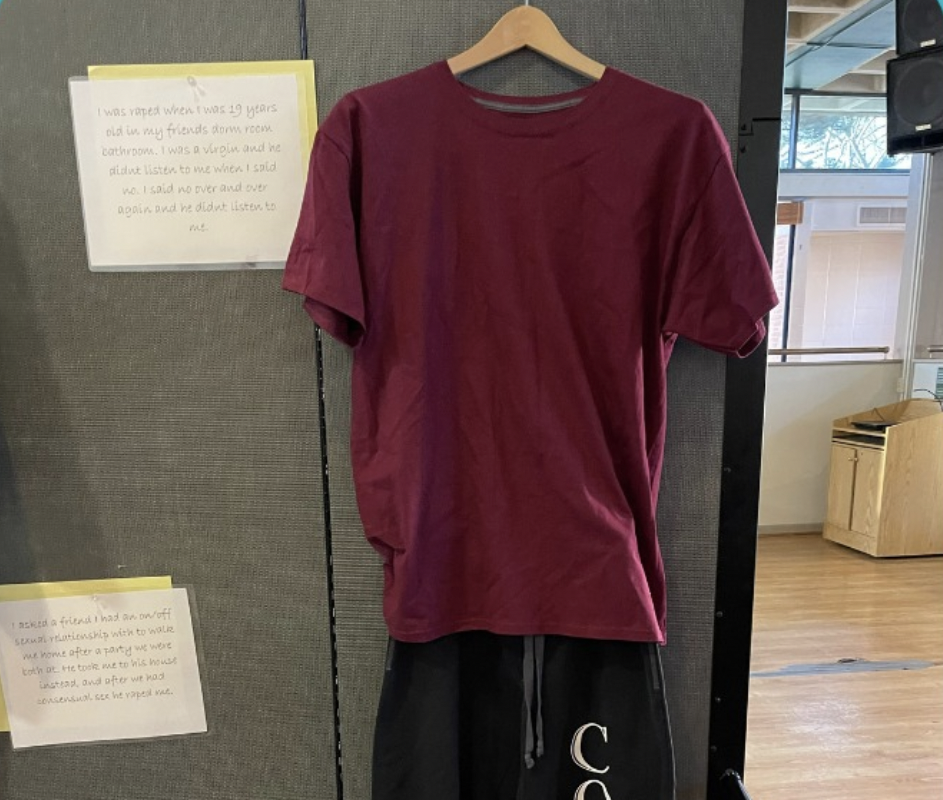
In the summer of 1998 in Italy an 18-year-old girl was raped by her 45-year-old driving instructor. He appealed that the girl had consensual sex with him because she was wearing tight jeans that could only be taken off with her help. The next day, Italian women showed up in jeans to their workplaces to protest the absurdity of this case. In response to this, Denim Day takes place on the last Wednesday of April, April 26 this year. This is an event where people are encouraged to wear denim to combat victim blaming and educate others about sexual violence.
Smith was wearing jeans on the night of her assault. Now, Smith and her roommates who typically wear sweatpants to class have decided to wear jeans for Denim Day, on Wednesday April 26.
Exhibits like the What Were You Wearing gallery, Take Back the Night and Denim Day are events that push towards ending victim blaming and rape myths like she shouldn’t have worn that and in a skirt that short you were asking for it.





